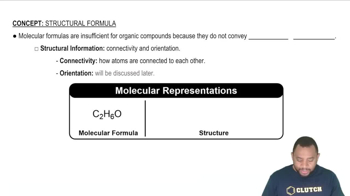Textbook Question
Predict the chemical formula for the ionic compound formed by (c) Al3+ and CH3COO-
 Verified step by step guidance
Verified step by step guidance



Predict the chemical formula for the ionic compound formed by (c) Al3+ and CH3COO-
Predict the chemical formula for the ionic compound formed by (d) NH4+ and SO42-
Predict the chemical formula for the ionic compound formed by (e) Mg2+ and PO43-.
Predict the chemical formulas of the compounds formed by the following pairs of ions: (c) Hg22+ and CO32-
Predict the chemical formulas of the compounds formed by the following pairs of ions: (d) Ca2+ and ClO3-
Predict the chemical formulas of the compounds formed by the following pairs of ions: (e) NH4+ and PO43-.